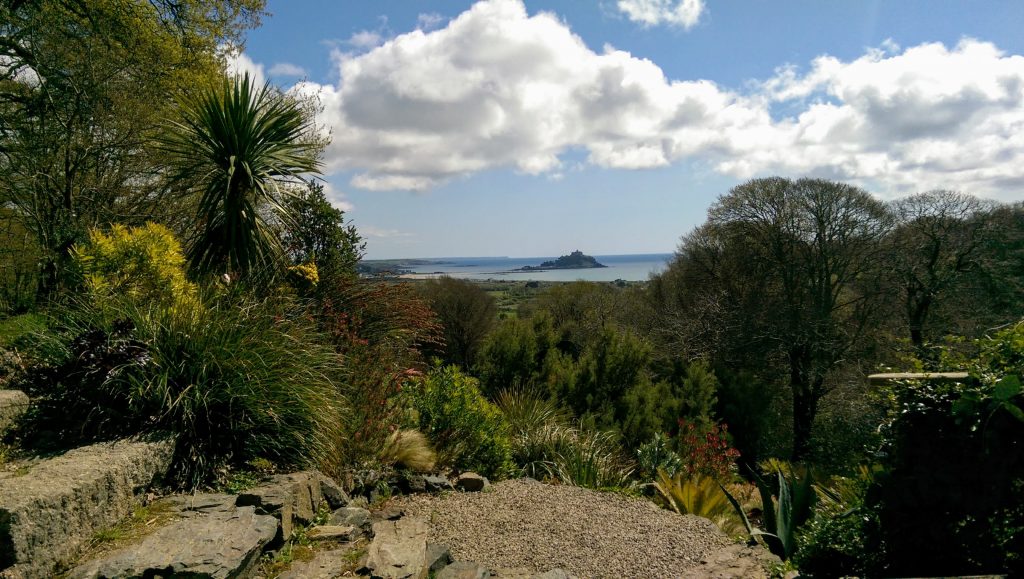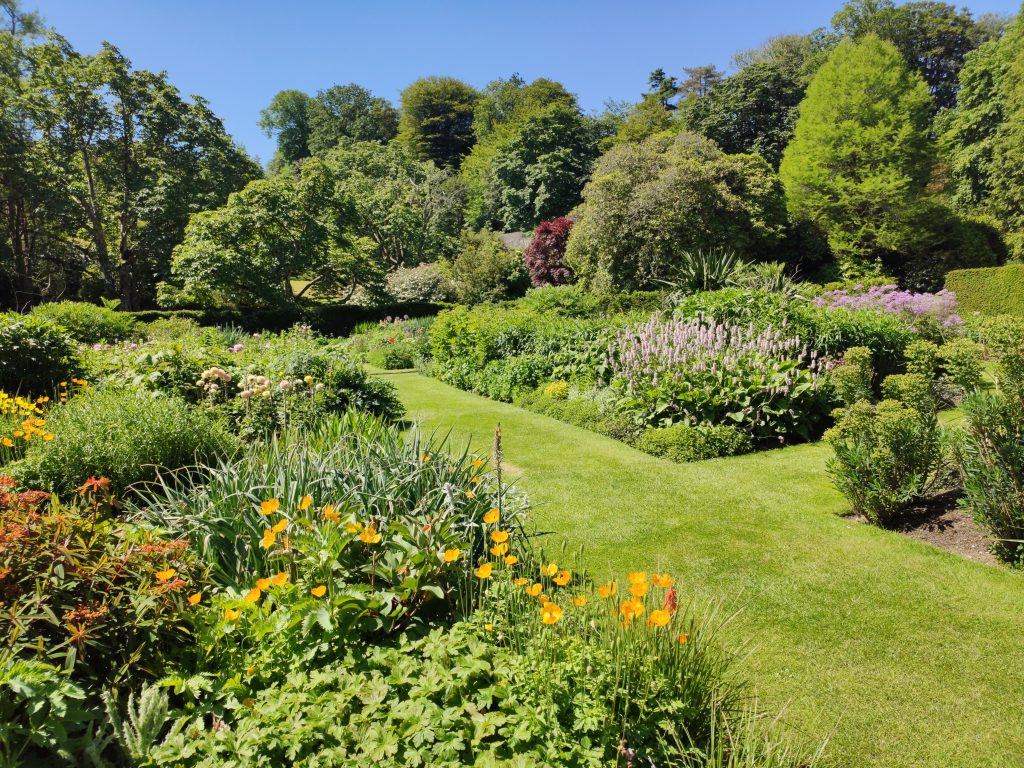First published as a guest blog for https://www.stmoritzhotel.co.uk/blog/ on 15.06.2021
Cornwall is rightly famous for its grand gardens. Our warm and wet climate makes it possible to grow many sub-tropical plants that would thrive nowhere else in the UK. Major attractions like the Eden Project and the Lost Gardens of Heligan are well worth a visit, especially for families with children, as are the many stately homes with gardens full of spring flowering azaleas, rhododendrons and camellias.
But where to go when the spring flowering is over, or if like me you find camellias just a bit… boring? Here are some suggestions for a slightly different Cornish garden. I’m based in Penzance so you’ll see the suggestions are somewhat skewed towards West Penwith, but I promise you a visit west will be richly rewarded.
Tremenheere Sculpture Gardens
Gulval, Penzance
It is one thing to enjoy sculpture in a museum or grand stately home, and quite another to view it outdoors in the landscape where the light, weather and nearby planting can continually change your impression of a piece. At Tremenheere, an evolving collection of sculpture and interactive art is dotted around the sheltered valley garden, with something new to explore around every bend. My favourite piece is James Turrell’s ‘Tewlwolow Kernow’, which I won’t describe so I don’t spoil the surprise, but its beauty is that it refocuses your attention on the natural world, is different every time you visit, and can change your mood in an instant.
The planting at Tremenheere doesn’t rely too heavily on the Cornish sub-tropical stalwarts like magnolias and rhododendrons (although there are a few magnificent examples of these) but instead has a much wider range of styles, from the shaded bamboo and tree fern river valley to the dry slopes of cistus, restios and palms, the sedums and textural grass gravel areas, and the dappled woods full of bluebells in spring. The Tremenheere café does excellent food (I love the roasts here), there’s a gallery featuring work inspired by the garden, and a shop selling succulents displayed so beautifully I’m always tempted.

St Michael’s Mount Cornwall – Historic Castle & Island (stmichaelsmount.co.uk)
Penzance
The gardens clinging to the side of St Michael’s Mount may have the most picturesque location of any in the world. The journey to the Mount is part of the adventure, whether at low tide by crossing the charming stone causeway over the beach, or at high tide returning by boat from the tiny harbour. The gardens themselves are steeply terraced, and you wander slowly up the narrow stone paths, unsure of whether to look at the plants or the view or your feet! Succulents tumble from rock crevices, all the better for being enjoyed at eye level. There are a few small walled garden rooms with perennial planting, everything here has to be super tough because although the rock radiates heat, the garden is also subject to gales and lashing of salty waves. Seen on a sunny day though and it’s hard to believe you’re still in England (well, some might argue you’re not!).
Run by the National Trust, you can also visit the castle and several cafés on the mount. In the worst kept secret in Cornwall, the rear of the mount gardens was recently used for filming the Game of Thrones prequel, so fans of the TV show can sit and imagine dragons atop the rocky cliffs.
Chygurno (visitcornwall.com)
Lamorna
So much to love about this little gem of a garden, hidden on the side of a tiny wooded valley. Built-in 1908 by two suffragettes who set up the Women’s Social and Political Union in Penzance but left unoccupied for years before extensive clearing and planting began. The current owners have been here for 20 years and have had to revise the planting after a series of cold winters and salt-laden easterly winds mean they can no longer grow some of the more tender plants. Not that you’d know from walking around, it is a treasure trove of unusual plants with something new around every corner. After the spring flowering shrubs finish in May, the garden pauses, takes a breath, and then roars into June with the vibrant blues of agapanthus and fiery orange crocosmia competing with the view of the sea for your attention.
Half the fun of the garden is in the labyrinthian paths and steps, it is a joy to get lost in, and I challenge anyone not to get lost the first time they visit! No need to wait for the sunshine to visit, it is just as much of a delight in our Cornish mizzle as the scents rise from the damp glossy foliage, and you’re more likely to have the winding paths to yourself. Not a garden for those with vertigo, and do wear your most sensible shoes.
No toilets or amenities but the Lamorna Wink pub is just down the road, and you definitely deserve a treat after managing all those steps.
Welcome to Trebah | Trebah Garden Cornwall
Near Falmouth
It’s always a pleasure to return to Trebah, a sheltered valley garden that runs down to the Helford River, the location alone is worth the trip. When the blue Hydrangeas are in flower in late summer, there is no more quintessentially Cornish garden. There is always something looking fabulous whenever you visit, from the Champion trees to the spring-flowering shrubs, the candelabra primulas in the water garden, exotic echium and puyas, huge swathes of bamboo and gunnera.
Slowly wind your way past the streams, pools, over bridges, and down to the private beach on the banks of the River Helford. In summer looking out at the boats moored on the azure blue water you could be in the south of France, only the gently undulating green hills bring you back to Cornwall.

Lanhydrock | National Trust
Bodmin
For the full National Trust experience, Lanhydrock is one of the best. The formal gardens to the front of the house are punctuated by enormous clipped yew columns, interestingly in the introductory video in the main house, you can see these yews when they were planted at about 1m high, which shows how we gardeners need patience and forethought! There is a small but perfectly planted circular perennial garden next to the church, and a woodland garden encircles the house, both maintained in a pristine condition.
When I last visited, the bog garden next to the stream was staggeringly beautiful with primulas, astilbes and plumes of ferns.
To get the most from your visit, take advantage of the walks and cycle trails through the 890-acre estate. As you wander around the parkland you can see many exceptional trees, some dating from 1634, and views out over the fields towards Bodmin Moor. There are cafes, play equipment, plant shops and even cycle hire so it’s easy to spend a whole day here.
